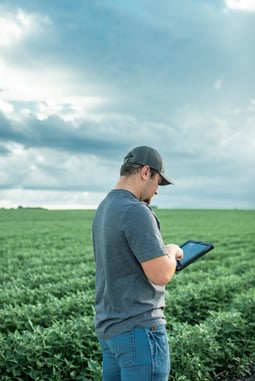It takes a great deal of effort to plan appropriately for the upcoming crop season. It isn't easy to be successful, and it definitely takes some time. There's an old saying that says, “You plan your work, and then you work your plan.”
To be successful, it's all about getting organized ahead of time.
One of the big benefits of being a great planner is directly related to buying opportunities. This sets you up to determine when to buy certain products during the year. The plan is not just what's going to happen agronomically to set you up for the next crop year but, also to factor your budget, and your cash flow for those buying opportunities.
When I work directly with farmers, I always ask the same question: do you plan before you buy, or do you buy before you plan? An overwhelming number of growers say they buy first. There's this pressure of getting in early and taking advantage of the early program discounts. They speak for and commit to a product, and then do some detailed planning with the products after they’ve purchased them. Some people think crop protection is an area that is difficult to plan. I don’t believe that’s true. It's really easy to develop a crop protection plan. You need to do some evaluation of what worked and where you have escapes. 80-90% of your crop protection could be planned a year ahead of time because you know what weeds escaped. You can plan to tackle them next year, as you go into crop rotations.
Weed resistance doesn't happen overnight, so growers can get a feel for that fairly quickly. We went through a decade where we didn't have weed resistance, which made crop protection planning much easier than it is now. We only had to think about how many ounces of glyphosate we were going to use. It's really changed since then, but most of it can still be planned. Having a great plan lets you take advantage of prepay opportunities, or the right pricing opportunities.
How do you prepare to plan? What data is relevant, as you think about planning your next crop year? What's the relevant amount of data that I need to start planning?
In our case, we manage fields based on different productivity opportunities within the field. We create specific zones where you can be more aggressive or less aggressive. It’s important to have some kind of a spatial soil sample where you're capturing pH changes and organic matter changes. Nutrient changes throughout the field are a significant piece of soil tests. A certain percent of the acres are getting re-sampled every year, so that information is constantly being updated.

One of the myths many growers believe is that planning is a single event. But this is not what we’ve seen from farmers who are effective planners. It is truly a multistep process. The best way to explain it is to use an example.
When you talk about planning with farmers, one thing they'll say is: “It's all weather dependent, and I can't plan. Nobody can predict the weather, and I can't plan because I don't know what the weather is going to be.”
I’ve found that people can generally plan around weather. Think of it in terms of nitrogen management. With nitrogen management, there are a lot of weather components involved, but many growers plan their nitrogen program to have handoffs during the year. Timeliness of field operations is a large part of this. Growers in heavier soils want to do some nitrogen application early because it takes the workload off. They'll do some nitrogen around planting time in order to have something immediately available to the young plant. At different places, you're handing the crop off to different types of nitrogen applications.
2020 was a great mineralization spring where everything warmed up. We had adequate moisture and everything took off. Most likely there was planned side dress that didn't happen because it wasn't needed. As a grower, you need to avoid being reactive. There's a certain mentality around: “I'm going to take a picture of the field through an image, and identify through the image the areas that need something.”
By the time the crop tells you it needs something, it's too late. You've already lost yield. If an image tells you that the crop is denitrified, it's not that you shouldn't address those denitrified areas, but you've already lost yield. Our goal is to never let the plant have a bad day. That's what high yields are all about. From start to finish, you want to execute a plan where the plant never has a bad day. That's how you maximize yield and yield efficiency.
For me, success rides in the details. As part of that detail, we need to get out of the mindset of treating entire fields as though they're the same. There is so much variability within fields. If we're going to drive higher return to land and management and a higher dollar return, we need to focus on where and how much we invest, how we treat parts of fields differently, and how we treat fields differently from one another. They're not all the same. Managing that variability is where the big dollar returns come in. We have single decisions that are high dollar-an-acre net swings for growers.
You can't make “complex” simple, but you sure can make it easier.
Growers feel more in control when they have a plan. When you feel more in control, you have more peace of mind. Right now, I think we can all agree that the world seems pretty out of control. Last year we found out how much our food production system is a “just-in-time” delivery system. There's a lot of “just-in-time” everything, and that's all detailed planning and logistics. It’s an amazing system, but right now, having a better plan in really tight financial times just gives you more control and more peace of mind. It's amazing how over the years I've witnessed growers plan seed around the destination of the grain. They plan what to plant based on where the grain is going to end up. They have fields they know are going to be the last to be harvested, so they are picking hybrids that have terrific standability and retention, and can stand until very late in the fall. They have fields that are coming out early to fill the grain dryer, or they're chasing an early ethanol bid on some fields. Everything is planned for details that are typically very “plannable”, but it all comes down to thinking ahead. We have growers who plan manure applications two or three years ahead of time. They'll contract with a turkey litter company very early on. They know that every few years they're going to get access to a certain amount of litter or manure, so they plan that far in advance. It’s impressive how these growers plan rotations around this. The ability to manage details and use data to drive confident decision making is a skill that takes great attention. Our planning tools allow you to see an overall summary to give you a high level snapshot of your seed, nutrients, crop protection and operations.
Many growers are sitting on a bunch of historic yield data. At Premier Crop, we can put that to use immediately. Many growers haven't made decisions off of what they have, so they like the idea of being able to take advantage of the data they've been collecting for so long. We generally grab the current planting data and applied fertility data right away because we’re focused on getting a benchmark year started immediately. That way we can establish a baseline year and judge and mark ourselves by how much we improve yields and yield efficiency. It’s never too late to get started putting your data to use. Making use of what you already have is a great starting point.
Get in touch with a Premier Crop Advisor here to get started making data driven decisions today.
Learn more about crop management.



